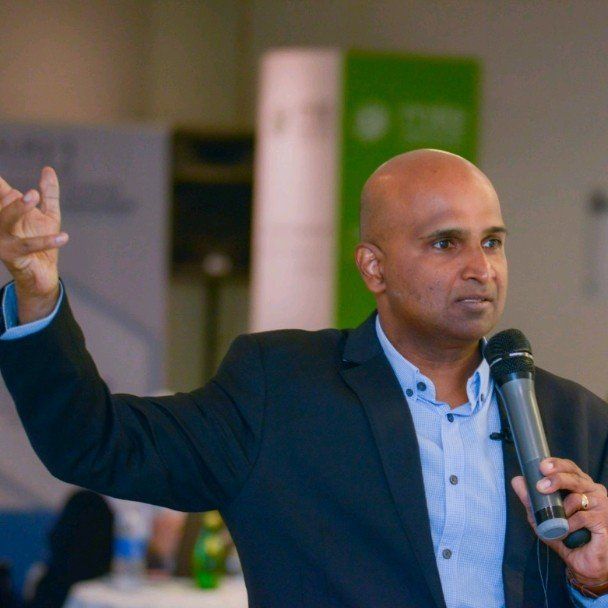Leading Education Institutions Using S&OP Processes

A failure to track and closely monitor technological changes (amid other changes in a Volatile, Uncertain, Complex and Ambiguous world) can lead to the demise of even highly successful enterprises. The Global Center for Digital Business Transformation offers a powerful way of examining industries affected by digital disruption. The researchers used the analogy of a vortex to describe industries affected by digital disruption.
A vortex is essentially a force akin to a whirlpool that can suck elements into its core. This definition implies that industries close to the core of the vortex are at the greatest risk of being disrupted. On the flip side, these industries also end up leading digital disruptions. The industries closest to the epicenter of the vortex are from the technology sector, such as Facebook, Amazon, Apple, and Google.
These companies either provide the relevant tools and technologies for digital disruptions, that is, they enable disruption for others, or they themselves constantly generate new value propositions in the economy and lead the disruption. 
The education industry is not spared from digital disruption. Continuous changes in teaching and learning activities coupled with emerging digital platforms that provide self-learning tools and technologies make this sector ripe for disruption. Although in the case of emerging economies such as Malaysia, digital disruption in the education sector is contingent upon strong regulatory conditions, which could prevent an immediate ‘sucked into the vortex’ syndrome. Nevertheless, academic institutions should constantly track and monitor technological changes that can impact this sector, particularly in making sure that our local graduates remain relevant in the digital economy and IR 4.0 space.
Sales and Operating Planning (S&OP henceforth) processes, when implemented well, can foster greater agility, an innovative culture and overall business sustainability. S&OP processes, albeit largely used in the FMCG space, can have significant impact on other industries also. In this piece we examine the relevance of S&OP Processes in the context of leading education institutions.
What are S&OP Processes?
S&OP (or SNOP for some) refers to leading businesses based on an integrated business management process. The term ‘integrated’ refers to leadership having a holistic-supply chain outlook of the business – encompassing core elements such as demand management, sales and marketing, production and new product development. A S&OP leadership view of any organisation is crucial as it enables leaders to achieve (if and when executed well) the following corporate/business outcomes (Hamza Samouche, Abdellah El Barkany, and Ahmed El Khalfi, 2020):
- Demand driven production – i.e. making sure that products and services developed and offered by the business, is in line with market trends and demand.
- Customer-centric solutions – namely processes that are established to ensure a business can pivot itself with agility, meeting exactly what customers want.
- Deeply connected business processes – integrated processes which includes good alignment between product planning, sales, finance, demand management etc.
Applying S&OP Processes to Leading Education Institutions
To ensure long term sustainability, education institutions must remain relevant. The programs or courses offered must be in line with industry trends and requirements. In this context, leadership within such institutions can think about six steps inherent in the S&OP Processes. These six steps, and how they relate to leadership in an educational context, are summarised as follows, based on Anaplan and Olive Tree Group.
1. Product Review
Essentially the first step in making sure that products/services are in line with market trends and requirements. Often, this involves discussions on new product development, pipeline of rollout, resource allocation for product lines or sunsetting decisions. In the context of education leadership, the top leaders must ensure that programs and courses are relevant to the industry.
Specifically, a periodic review of programs and curricula must be carried out to ensure issues such as industry relevance and trends are captured within the body of knowledge, course and programme learning outcomes. A good practice would be to run new programmes that are to be launched through several feasibility gates/check-points to ensure they are relevant.
2. Demand Review
A key aspect of this phase is for organisations to conduct proper demand forecasting using data from dependent and independent demand factors. The end goal is to develop a consensus-based demand plan, which is derived from market analysis and review.
To ensure long term sustainability, education institutions must remain relevant. The programs or courses offered must be in line with industry trends and requirements.
The number of jobless graduates in Malaysia is currently estimated at just over 170,000 people. One could argue that this is largely due to universities that are churning out graduates that possess qualifications not required/irrelevant to industry trends. As such, thinking of programs that are relevant to industries require proper demand review – universities must be fully aware of future skills and jobs that will be in demand.
3. Supply Review
An integral part of the S&OP process is to ensure that the business has the ability to offer what the market needs – i.e. ability to meet market demand. Typically, the demand and supply review process work in tandem with one another. Business simulations (‘what-if’ analyses) play a vital part in making sure the resource allocation is planned for accordingly in anticipation of demand.
For an academic institution, this step requires that the organisation has sufficient talent, technology, resources such as labs/classrooms processes and overall capacity in light of it’s programme offering. For example, most universities are now investing in resources that mirror the 4th IR requirements – to ensure they remain relevant.
4. Finance Review
There is some debate as to when a financial review should be done – while some call for a review after the third step, others say that financial review should be seen as an ongoing process. From an S&OP process view, a financial review is often under the purview of the finance team – with a global business lens in mind, namely looking at financial models and data, based on the customer, product, market and other data. 
Regardless of where this process sits in a company’s overarching process, a financial review must be used as an input to pre-S&OP and Executive S&OP steps. In the context of academic institutions, finance reviews need to take into consideration issues such as program USP, relevance to industry, and data analytics driven by past data (e.g. student numbers, employability rates, graduating on time requirements, progression estimates etc.). When this is done, issues such as business sustainability can be better addressed.
1. Pre-S&OP
The Pre-S&OP usually involves a series of meetings between key leadership teams – often going through data and dashboards accordingly to assess gaps, variances, and, based on financial data, set out strategic and tactical plans. Alignment to product/service and supply plans are then done.
For academic programmes, continuous improvements based on financial and market data is vital to ensure long term sustainability of institutions. The pre-S&OP process allows leadership within academic institutions to decide between growing versus canning of programs, rethink mode of delivery (supply) in light of market demand-driven data, and also very quickly rethink its new product development processes where necessary. Again this will ensure that only programs that are in demand and in tune with industry demands are offered, and continuously improved.
2. Executive S&OP
The final stage of the S&OP process is the end game in mind. Decisions are made and deadlines are set based on the feedback and input from the first five steps, and this applies to academic and other institutions alike.
Conclusion
Academic leadership that assumes a S&OP process view for their respective institutions, are well placed to set themselves apart from the rest.
The Future of Jobs report 2020 (World Economic Forum), states that the top five skills that are highly demanded by industries in Malaysia are: emotional intelligence, creativity, analytical thinking and innovation, technology design & programming, and complex problem-solving. The report also suggests that employers are focusing on similar skill sets as part of their corporate retraining and upskilling initiatives.
As such, to ensure they remain relevant, both academic and training institutions alike need to offer programs and courses that address these emerging skills that are required for the future. Academic leadership that assumes a S&OP process view for their respective institutions, are well placed to set themselves apart from the rest. However, to reap the full benefits of the S&OP processes, a greater financial review and inclusion across the business and academic value chain seems to be the way forward.
Functional
Tags: Covid-19, Executing Leadership, Research & Development, Education
Prof Dr Murali is the Deputy Vice Chancellor of Asia Pacific University of Technology and Innovation. As a coach and trainer for over 15 years, he specialises in three broad areas: design thinking and digital economy, leadership development using directive communication based on coloured brain and emotional drivers, and soft skills development. Prof Dr Murali has published over 100 papers in international journals and conferences, including a book. He has also won numerous awards for academic leadership.






